First aid training for individuals bitten by animals or insects
500,000 ₫
Note: The above price is calculated per person. Prices may vary depending on the number of participants in the course and market fluctuations. For more accurate pricing, please refer to the price list or contact our consulting staff directly.
Table of Contents
Toggle1. Identifying a Person Bitten by Animals or Insects
a. Cases of animal or insect bites
There are many cases of people bitten or stung by animals or insects. Some common cases include:
- Dog or cat bites: Including bites from stray dogs or animals with unknown rabies vaccination status.
- Insect bites: Includes insects such as bees, ants, flies, mosquitoes, spiders, and other insects.
- Snake bites: Includes both venomous and non-venomous snakes.
- Wild animal bites: Includes bites from wolves, leopards, deer, tigers, bears, and other wild animals.
- Invertebrate bites: Includes bites from caterpillars, larvae, penguin beetles, and other invertebrates.

b. Signs indicating someone is about to be bitten or stung
There are several signs indicating a person may be at risk of an animal or insect bite. Common signs include:
- Pain and swelling: The bite or sting site may become painful and swollen within minutes after the bite.
- Redness and inflammation: The area around the bite or sting may become red or swollen.
- Itching and discomfort: The victim may feel itching and discomfort at the bite or sting site.
- Visible marks: Bite or sting marks may appear on the skin, either as small dots or distinctive patterns (e.g., circular bites or rows of teeth marks).
- Systemic effects: In some cases, bites or stings can trigger systemic reactions such as allergic responses, fatigue, or difficulty breathing.

c. Assessing the condition of a victim bitten by animals or insects
It is not possible to accurately assess the condition of a victim solely based on external signs. The victim’s condition may depend on various factors, including the type of animal or insect, toxicity of the venom, location and number of bites, and the individual’s physiological response.
However, some common conditions a victim may experience after an animal or insect bite include:
- Allergic reaction: Some individuals may have a severe reaction to venom, causing symptoms such as swelling, hives, itching, difficulty breathing, or life-threatening reactions.
- Infection: If the skin is broken or damaged by the bite, there is a risk of bacterial infection, leading to inflammation and swelling at the site.
- Toxic effects: Certain animals or insects with venom can cause symptoms such as pain, spasms, fatigue, nausea, or headaches.

d. Golden time for cases of animal or insect bites
The golden time for animal or insect bites is critical. Golden time refers to the short period after the bite when initial first aid should be administered. The exact duration depends on the type of animal or insect and the victim’s condition, but immediate first aid measures are generally recommended:
- Non-venomous bites or stings: Golden time is typically a few minutes to one hour. During this period, clean the wound with soap and water, apply a bandage to control bleeding, and use pain relief or anti-allergy medication if necessary.
- Venomous bites or stings: Golden time may be very short, often just a few minutes. Seek medical assistance immediately and report the type of animal or insect to receive specific emergency guidance. If possible, minimize movement of the bite area to prevent venom spread.
In all cases, if there are any signs of severe or potential symptoms, it is extremely important to call emergency services immediately for life-saving guidance and to transport the victim to the nearest hospital.

2. Overview of first aid training for animal or insect bites
a. What is a first aid training course?
A first aid training course is a program designed to help learners master basic and advanced first aid skills. It includes lessons and practical exercises on handling emergencies such as cardiac arrest, respiratory failure, poisoning, injuries, and other urgent situations.
The purpose of the course is to equip learners with the necessary skills to respond to emergencies, minimize harm to themselves and others, increase survival chances, and ensure timely transfer to medical facilities.
REGISTER FOR BASIC FIRST AID TRAINING
b. Training duration
Initial first aid training:
- For employees: 4 hours.
- For first aid and emergency responders: 16 hours (2 days).
Periodic first aid training:
- For employees: 2 hours.
- For first aid and emergency responders: 8 hours (1 day).
c. Course content
- Basic principles of first aid and on-site emergency care
- Wound bandaging (principles, tools, techniques)
- Temporary bleeding control techniques (principles and methods)
- Temporary fracture stabilization techniques (principles and tools)
- Cardiopulmonary resuscitation (recognizing signs of cardiac arrest, airway clearance, breathing support, CPR guidance)
- Burn management (assessing cause and severity, on-site first aid)
- Safe victim transportation with and without stretchers for initial care
- Specific emergency care scenarios:
- Electric shock
- Drowning
- Chemical accidents
- General guidance on first aid kit use
- Practical exercises for all content areas
d. First aid training certificate
Upon completing the course, learners will receive a certificate confirming completion of the first aid training program under the Group 2 training framework as specified in Appendix IV, Decree 44/2016/ND-CP. The certificate is valid for 1 year.


3. Essential items in a first aid kit for animal or insect bites
For first aid kits used to treat animal or insect bites, the following tools and items are recommended:
- Bandages: To wrap wounds and control bleeding.
- Medical gloves: To ensure safety and reduce the risk of infection.
- Water and soap: For cleaning the bite area before bandaging.
- Clean cloths: For drying or covering the bite area after cleaning.
- Fixation bandages: To stabilize the bite area.
- Cotton and gauze pads: Used for protection or controlling minor bleeding.
- Saline solution: To rinse the bite area and clean wounds.
- Anti-allergy medication: May include anti-itch or antihistamine medications to reduce allergic symptoms.
- First aid instructions: Particularly useful in high-risk areas for animal or insect bites.
REGISTER FOR BASIC FIRST AID TRAINING
4. First Aid Procedure for Animal or Insect Bites
Below is the first aid procedure for someone bitten by an animal or insect:
- Protect yourself and the victim:
- Move the victim away from the risk of further attacks by animals or insects.
- Ensure your own safety by wearing medical gloves or other protective materials.
- Examine the wound:
- Check the bitten area to assess the severity of the injury and any concerning symptoms.
- If there are any serious symptoms or multiple allergic reactions, call emergency services immediately.
- Control bleeding:
- If bleeding occurs, use a bandage or waterproof material to cover the wound and apply steady pressure.
- If bleeding is heavy or continuous, apply pressure to the main blood vessels near the bite area (if appropriate) and call emergency services.
- Clean the bite area:
- Use water and soap or saline solution to clean the bite area.
- Wash the area thoroughly for at least 5 minutes to remove dirt and bacteria.
- Apply cold (if needed):
- If the bite area is swollen or painful, you can apply a cold pack or ice wrapped in a thin cloth to reduce inflammation and pain.
- Relieve itching and allergic reactions (if needed):
- If the victim experiences itching or allergic symptoms such as swelling or redness, use anti-itch or antihistamine medication according to instructions.
5. Benefits of First Aid Training
First aid training provides many important benefits for individuals and communities:
- Saving lives in critical situations: First aid skills enable trainees to save someone whose life is at risk, such as cardiac arrest, respiratory arrest, poisoning, injuries, and other emergencies.
- Helping others learn first aid: Trained individuals can share their knowledge and experience with others, helping the community protect itself and reduce mortality in emergency situations.
- Reducing rescue waiting time: When trained first aiders handle emergencies on-site, it reduces waiting time for rescue teams to arrive.
- Enhancing response and reducing stress in emergencies: First aid training helps learners respond accurately and quickly, reducing stress and anxiety while waiting for help.
- Increasing survival rates and reducing fatalities: Timely and proper first aid increases survival chances and reduces complications or deaths in emergency situations.

6. First Aid Training Capacity of An Toan Nam Viet
An Toan Nam Viet is a reputable and high-quality first aid training center in Vietnam. Continuous training sessions are conducted at manufacturing workshops, factories, and construction sites nationwide (all 63 provinces of Vietnam).
REGISTER FOR BASIC FIRST AID TRAINING
Training Certification
- An Toan Nam Viet has been inspected and certified by the Department of Safety under the Ministry of Labor – Invalids and Social Affairs, granting certification for occupational safety and hygiene training. Within the Group 2 training program, the first aid skills module is included, further reinforcing our capacity in first aid training.

Training Materials and Lectures
- Before first aid training materials are used in first aid courses, they are reviewed to ensure accuracy and practical effectiveness.
- Instructors’ teaching methods are standardized according to An Toan Nam Viet standards, developed by experts in first aid training to maximize knowledge retention for trainees.
Facilities
- Controlling factors in the training room enhances teaching efficiency and knowledge absorption.
- Our training facilities provide spacious classrooms meeting standards for space, lighting, and training equipment, etc.
7. Nationwide First Aid Training Centers
An Toan Nam Viet is one of the most reputable and professional organizations for first aid training in Vietnam. With experienced instructors, modern equipment, and high-quality programs, the center has become an ideal destination for those interested in protecting lives and health.
By participating in courses at An Toan Nam Viet, you will learn basic and advanced first aid skills, including CPR for cardiac arrest, respiratory arrest, poisoning, injuries, and other emergency situations. The program is flexible and suitable for all learners, from adults to children, medical staff, rescue personnel, and the general public.
An Toan Nam Viet’s first aid training not only teaches essential life-saving skills but also fosters awareness to protect your own life and health as well as those around you. Training by experienced and highly qualified instructors ensures confidence and readiness for any emergency situation.
Register for first aid courses at An Toan Nam Viet to protect your life, health, and the community.
1 review for First aid training for individuals bitten by animals or insects
No comments yet


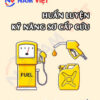

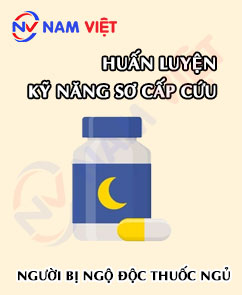
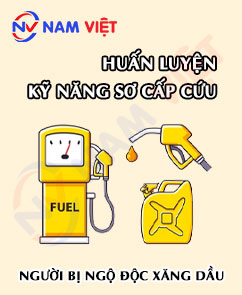

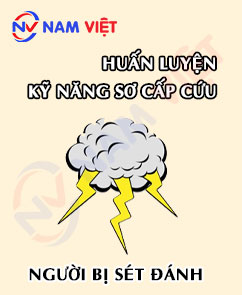

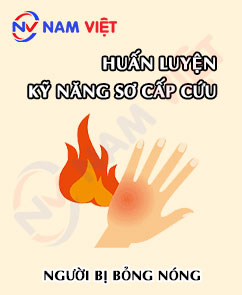

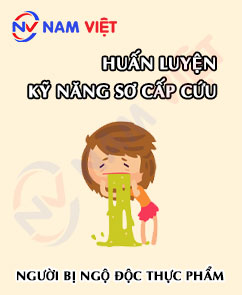
maituyet.cuong12
Good first aid training center! Satisfied